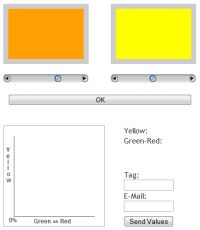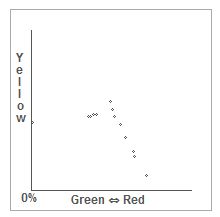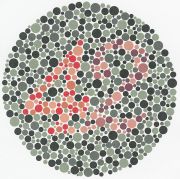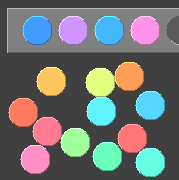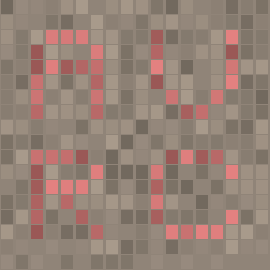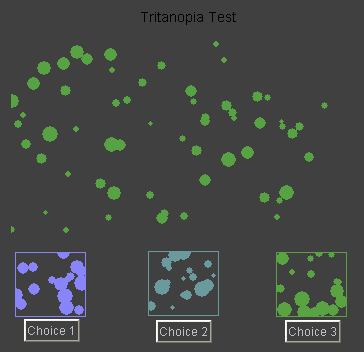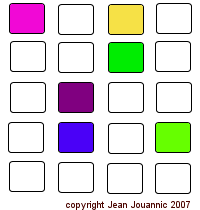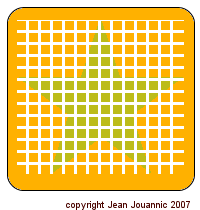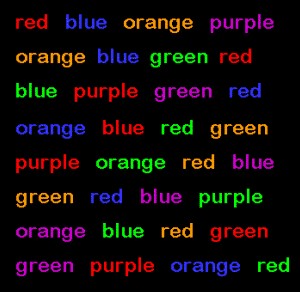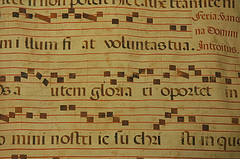The anomaloscope is the most accurate tool to classify your color blindness. Since it was developed by a German ophthalmologist just over 100 years ago it is used all over the world to check the severity of ones color vision deficiency and its specific subtype.
The classical anomaloscope is used to identify red-green color blindness. It consists of two different light sources which have to be matched. One source is a yellow lamp which can be adjusted in its brightness. The other one is made by a mixture of a red and a green lamp, whereas the mixture between those two colors can be calibrated.
According to the match the tool can tell you details about the following facts of your color blindness:
- Red- vs. green-blindness,
- dichromacy vs. anomalous trichromacy,
- and the severity of your color vision deficiency,
As this tool is only available as a quite expensive equipment I tried to simulate it online. I knew that there is only a little chance to get the same results as the real anomaloscope. But I tried it anyway and designed the RGB Anomaloscope. As all computer displays are based on the colors red, green, and blue, it will always be a simple approximation of the real test.
The diagram below shows the test results as matching-lines of some red-green colorblind persons. Each point means that this person matched a certain red-green combination to some shade of yellow. Non-colorblind people would only match the point 50/50 with some variances.
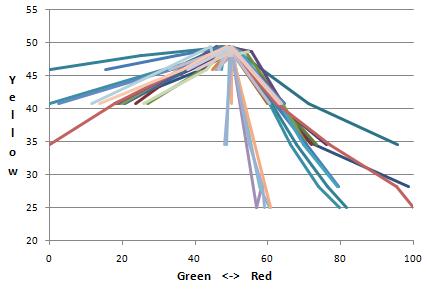
Unfortunately the results didn’t turn out as I thought. I couldn’t find any split between red- and green-blind persons. Also it isn’t that easy to judge the severity of a red-green color blindness.
Anyway, the test is online and you are welcome to try it out. Maybe there will be some improvements in future releases of the RGB Anomaloscope Color Blindness Test, so stay tuned.
A big thanks to everybody who helped me to develop the test.

